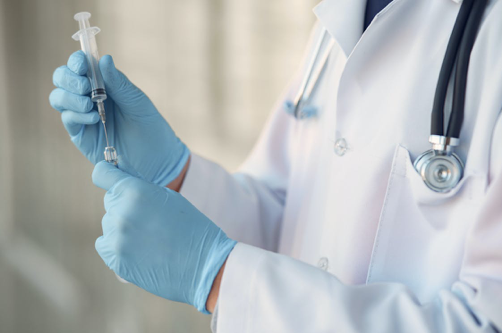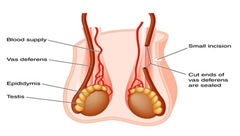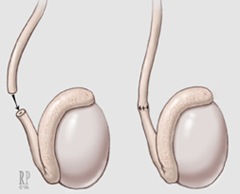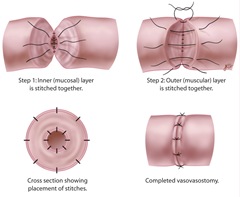What procedures do urologists perform? For ages, doctors examined the urine to identify underlying conditions. They analyzed texture, odor, and color. Furthermore, they also looked for blood, bubbles, and other signs of different diseases. Now, medicine has a separate field that includes performing procedures on the urinary system and maintaining its health. You can refer to the field as urology. In this article, we will discuss urologists and the procedures they perform.
Who is the Urologist?
These medical professionals have specialized in diagnosing, treating, and preventing conditions pertaining to the urinary system. They diagnose, identify, and treat the bladder, kidneys, ureters, and urethra. Urologists also help treat reproductive disorders related to the scrotum, testes, prostate, and penis. Urologists can also serve you for the conditions such as:
- Prostate cancer
- Kidney stones
- Problems related to urine

(Source)
Procedures that Urologists Perform
You can visit urologists for numerous reasons. They can diagnose and treat various urologic conditions:
1. Vasectomy
Vasectomy is a common procedure for birth control. Around 500,000 men in the US undergo this treatment every year, as suggested by the American Urological Association. The success rate of vasectomy is higher than other birth control techniques. In this procedure, the doctor will block or cut the sperm supply by removing a piece of vas deferens. Vas deferens is a tiny tube that carries sperm cells from the testicles. This is an out-patient procedure, and you can go home after the surgery.
2. Vasectomy Reversal
If someone decides to undergo vasectomy, he can avoid unwanted pregnancies. But in the event you want to start a family with your partner, you can reverse this procedure with a vasectomy reversal. Vasectomy reversal has a high success rate, but it does not guarantee that your partner will conceive. Numerous factors can affect your fertility rate in this case. Nonetheless, the urologist will use microsurgery techniques to reconnect the vas deferens.
3. Cystoscopy
With the help of cystoscopy, the urologist will examine the lining of the urethra and the bladder. The urologist will insert an instrument into the bladder through the urethra. The cystoscope is a thin and long tube that includes a camera at the top. Cystoscopy is a procedure that helps in diagnosing and treating issues of the bladder. The urologist might also use this procedure to diagnose problems with the prostate.
4. Prostate Procedures
Urologists can perform numerous tests and procedures to diagnose and treat prostate conditions. These procedures include
- UroLift
- Transurethral needle ablation (TUNA)
- Transurethral incision of the prostate (TUIP)
- Transurethral resection of the prostate (TURP)
- Prostate biopsy
During these procedures, urologists use light to produce intense heat and remove the extra tissue. This enables the flow of urine. The surgeon will recommend an appropriate technique depending on the size of your prostate and your health.

(Source)
5. Ureteroscopy
This procedure helps to identify and treat kidney stones. The urologist will use a special instrument to guide through the bladder and urethra to the kidney stones’ location. You can refer to the instrument as the ureteroscope. It is a thin and long tube with a camera and light for inspection. The urologist will remove the small stones from your kidney. They break up and remove larger stones individually. The experts refer to this procedure as lithotripsy.
6. Lithotripsy
During lithotripsy, the urologist will use laser or shock waves to break ureter, bladder, and kidney stones. Once the urologist breaks the stones into pieces, they exit the body upon urination.
7. Orchiopexy
Orchiopexy helps to repair the undescended testicle. In this procedure, the urologist will bring back the testicles from the groin or abdomen to the scrotum. Then they attach it with the tacking stitch.
8. Penile Plication
This surgical procedure treats curvature in the penis. Urologists often recommend this procedure after diagnosing Peyronie’s disease. This treatment is an out-patient procedure and involves placing a suture on the opposite side of the scar, supporting the penis from the other side.
9. Penile Implants & Prosthesis
A urologist can also help treat erectile dysfunction with the help of a penile implant . This procedure helps you maintain proper erections. The patient typically will undergo ED treatment first. If this treatment fails, the urologist may offer the patient the option to get a penile implant. Those suffering from Peyronie’s disease and cannot get erections often opt for a penile prosthesis.
10. Male Circumcision
During circumcision, the urologist will remove the foreskin or tip of the penis through a surgical procedure.
Procedures Urologists Perform: Conclusion
Dr. Yaniv Larish at Vasectomy Reversal NYC can help you with a vasectomy or vasectomy reversal. Our experienced surgeons also diagnose and treat all other urological disorders. Call today to schedule an in-person or tele-consultation at (646) 862-5500.



